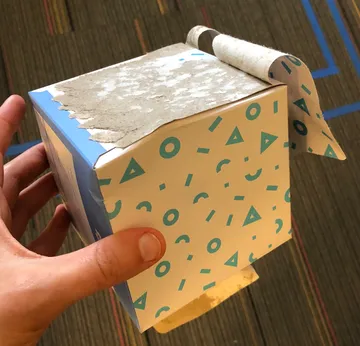Eco-Friendly Toilet Paper: A Product Strategy Case Study

Josh Korr, Former Product Strategy Director
Article Categories:
Posted on
Who Gives a Crap's great brand wasn't enough to overcome my product frustrations and keep me from switching to Reel.
I've been using eco-friendly toilet paper for about a year, since my colleague Carolyn did a great presentation on making greener purchasing choices. And while I won’t go back to wasting-the-trees toilet paper, I have since switched eco-friendly brands because of some frustrations I experienced with the first product I tried.
The dynamic of that switch is an interesting product strategy case study. Who Gives a Crap, my entry into eco-friendly paper, leans heavily into brand as a differentiator. But in the end, their great brand wasn't enough to keep me from switching to another product, Reel.
In this post, I share my experience with these two companies through a product strategy lens.
Eco-Friendly Toilet Paper Core Strategy
Who Gives a Crap and Reel have similar core strategies. Both offer eco-friendly toilet paper, tissues, and paper towels for the same broad customer segment: people who want to reduce environmental impact (an “emotional” or “social” customer problem, in Jobs-to-Be-Done parlance) while using toilet paper and tissues for the things one needs those for (a “functional” customer problem). Both are certified B Corporations and donate a portion of revenue or profit to nonprofits.
Who Gives a Crap has one big differentiator: brand. And they have an amazing brand.
They write witty and engaging copy that infuses every point in the customer journey, from the marketing site to confirmation emails to product packaging. The brand and packaging design is vibrant, bright, fun, and polished. It makes me smile every time I look at it.
From Brand Promise to Product Frustrations
I started with Who Gives a Crap, trying their toilet paper and tissues. They passed my initial green-product-skepticism test: from a functional perspective, the products were adequate to good.
But then I found myself getting a little frustrated. Nothing major, just small things — but they kept happening. I even felt bad about feeling frustrated, because I liked the brand so much.
I broke the frustrations into two categories:
Functional Frustrations
Pilling Apart: Besides the normal uses of toilet paper, I also used it to wash my eyes upon waking up. And I found that when moistened, the paper would disintegrate a little and leave bits on my face.
Experience Frustrations
Can’t Tear a Square: The toilet paper never tore along its perforations. So every time I used it, I inevitably ended up with multiple ragged half-squares.
Dented Boxes: During more than a year as a customer, every single shipping box has been partially crushed. When I open the shipping box, the tissue boxes are also usually dented and a few boxes’ perforated tops have come loose. As best I can tell, the shipping box size is simply not the right size for the product packaging sizes.
Funky Box Breakdown: Once I'm done with a tissue box, it’s surprisingly annoying to disassemble for recycling. The box doesn't come apart easily, through some combination of too-strong glue and odd folding. (Yes, this means the boxes are both too strong to break down and too weak to survive the delivery. Come on!)

From Frustration to Churn
Now, if Who Gives a Crap were the only eco-friendly option, I would deal with all of the above. It was good enough functionally, and my values would outweigh my desire for neat tearing and properly sized packaging.
But — record scratch! — there are other products in this space.
Shortly after realizing I was frustrated with Who Gives a Crap, I happened to hear a podcast ad for Reel. I'd never heard of them, and hadn’t been frustrated enough to pro-actively look at other options. But when I heard the ad, I decided to try it. (Sidenote: I guess some people do actually use podcast offer codes to get 10 percent off their first order. Who knew!)
Note that throughout my acquisition journey, I didn’t smile once. The brand is pedestrian and boring, though well-designed (if understated). They never made me laugh.
But after my first use, I immediately decided to switch to Reel, because the product was better.
Functionally, the paper seems sturdier; it doesn't fall apart when I dab my eyes. Experience-wise, the tearing isn’t 100% perfect but tears accurately most of the time. The shipping box is never dented.
I have continued to use Who Gives a Crap for tissues, solely because Reel’s smallest order has too many boxes to store in my small space. But if Reel ever offers a smaller order size, I’ll definitely switch.
From a product strategy perspective, this illustrates that besides the core customer problems you’re solving, you also need to understand your customers’ additional decision criteria (a.k.a. Jobs-to-Be-Done’s “desired outcomes” or Business Model Canvas’s “pains and gains"). These criteria may not be top-of-mind or conscious; they may not be explicit criteria for a customer’s initial purchase decision.
But once a competitive product enters the picture, those decision criteria — each of my small, it’s-not-a-big-deal frustrations — suddenly become a churn risk.
As for my relationship with Who Gives a Crap? Sorry, friends: You make me laugh, but it turns out I do give a crap — about product and packaging quality! (Zing?)









